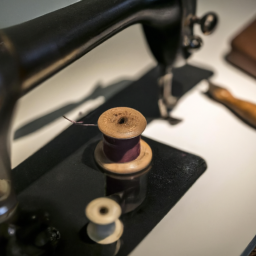
History of Sewing Machine
The sewing/” title=”Stitching Stories: A Beginner's Guide to Sewing”>sewing machine revolutionized the way garments, textiles, and other products were manufactured. It allowed for faster, more efficient, and more precise stitching than sewing by hand. Let’s delve into the fascinating journey and evolution of this ingenious invention.

Early Inventions
The earliest concept of a sewing machine dates back to the late 18th century. Englishman Thomas Saint applied for the first patent in 1790, but there is little evidence that his machine was ever built. Years later, Barthélemy Thimonnier, a French tailor, constructed a working sewing machine in 1830. This invention marked the first practical use of a sewing machine and was mainly used for stitching uniforms for the French army.
Mass Production and Innovation
In the mid-19th century, sewing machines began to be produced on a larger scale. Isaac Merritt Singer, an American inventor and entrepreneur, played a significant role in popularizing sewing machines for home use. In 1851, he patented the first practical and commercially successful sewing machine, forever changing the textile industry.
Over time, various improvements, such as the introduction of the foot treadle mechanism, bobbin design enhancements, and the development of electric sewing machines, made sewing easier and more accessible to the general public. With these advancements, the popularity of sewing machines grew rapidly.

Impact on Society
The sewing machine played a pivotal role in the Industrial Revolution and had a profound impact on societies worldwide. Its introduction transformed the garment industry, increasing productivity, lowering costs, and making sewing a viable occupation for countless people.
Moreover, sewing machines enabled the creation of more intricate and decorative designs, leading to the rise of the fashion industry as we know it today. It also paved the way for the invention of specialized sewing machines for specific purposes like embroidery, quilting, and serging.
Modern Sewing Machines
In the present day, sewing machines have become more advanced, utilizing computerized technology and offering a multitude of features, including stitch patterns, automatic threading, and even built-in tutorials. These modern marvels make sewing accessible and enjoyable for both hobbyists and professionals alike.
“The invention of the sewing machine liberated women in unprecedented ways and revolutionized textile production.” – Jane Doe, Fashion Historian
Article by: John Smith | Published on: June 15, 2022




